Most ecommerce businesses are looking for the fast track to growth and success.
Unfortunately, there’s no such thing. But, forget the fast track… there’s an even better way.
In chatting with hundreds of businesses, we’ve discovered five ecommerce growth hacks that will help you to increase traffic and revenue sustainably.
No tricks. No gimmicks. No scams. Only proven tactics to help your ecommerce business grow.
Let’s get right into it.
%(tableofcontents)
[Hack #1] The “Best Seller” Growth Hack
Sales don’t lie!
Your best-selling products are low-hanging fruit for your business to capitalize on.
Everyone tends to love products that they know everyone else is buying. Social proof is an incredibly powerful tool in getting people to buy your products.
That’s where the “best seller” growth hack comes into play. Here’s how to make it work:
Step 1: Identify your best seller
This one probably doesn’t need much explanation, but if you’re unsure what your current best selling products are, here’s the step-by-step I’d use to find them.
But first, remember that identifying your best selling products requires that you take into account a variety of factors, not just total sales numbers. You want to make sure you’re choosing the product that’s best for your business. A great “best seller” might include products that have a solid profit margin, products that are easily produced, products that are in-stock, easy to ship, and more.
If you have Google Analytics set up on your website, quickly sort website pages by traffic by Behavior >> Site Content >> All Pages:
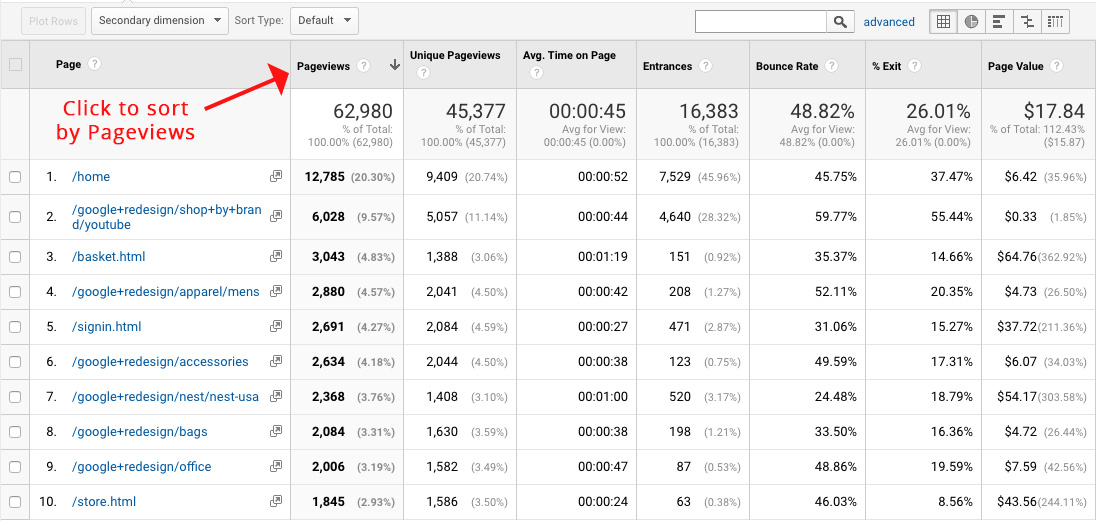
To take it one step further, sort by Page Value to determine which product pages are bringing in the most revenue for your business. Traffic doesn’t always equal sales:
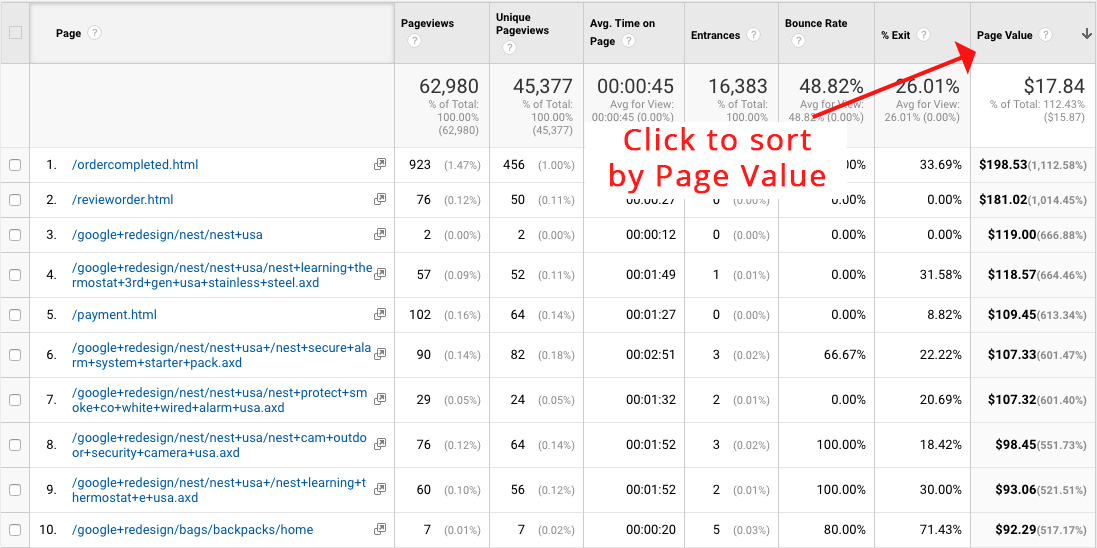
If you don’t have values attached to certain actions taken on your website, I highly recommend getting them set up. You can do this by setting up specific “Goals” within Google Analytics to track sales, landing pages, clicks, signups, and more.[*]
Once you have your best selling products identified, it’s time to build a landing page.
Step 2: Build a landing page for your product
There’s a lot that goes into the perfect landing page, but that’s for another time.
Your “best seller” product landing page doesn’t have to be perfect (it practically sells itself). It just needs to do the job of getting people to convert from visitor to customer.
Check out this one from Brent Black Panama Hats. This “Best Of The Best” hat goes for $25,000 each. And guess what? They sell a ton.
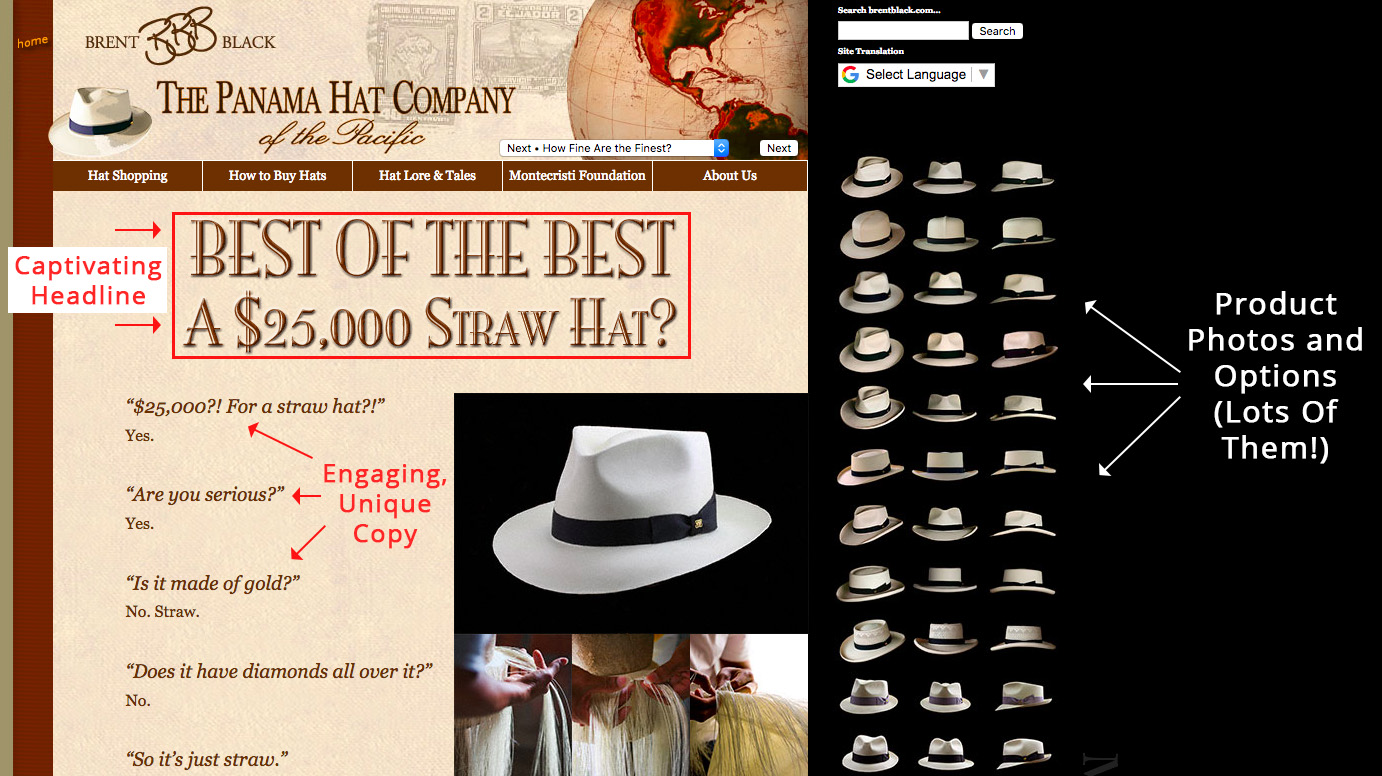
This is a long-form sales page to sell the product.
Pages like these which tell a story are great for running ads on networks like Google Display Network (GDN) where there is less search intent and people need to be sold on the product.
The landing page conveys the value, answers customer questions up front, provides more than 50 language translations, and has clear call to actions (CTAs) throughout.
If you don’t have the tools to create a story-based landing page like this or aren’t sure where to start, the Sumo Welcome Mat tool can help you to create a high-converting landing page in a jiffy.
Step 3: Advertise that landing page
Once your “best seller” product landing page is up and running, it’s time to advertise.
In the world of ecommerce marketing, I’d recommend two time-tested methods of getting the word out about your new landing page: email and Facebook Advertising.
Start with a highly effective organic method of email marketing by targeting a segment of customers who have not purchased the product.
Or, you can reverse engineer the whole process by starting with Facebook to find the most effective copy and image combination. Then, you can use the winning combination to create a much more effective email advertisement for your landing page.
Here’s some ads I mocked up to show you how to do it:
Ad A:

Ad B:
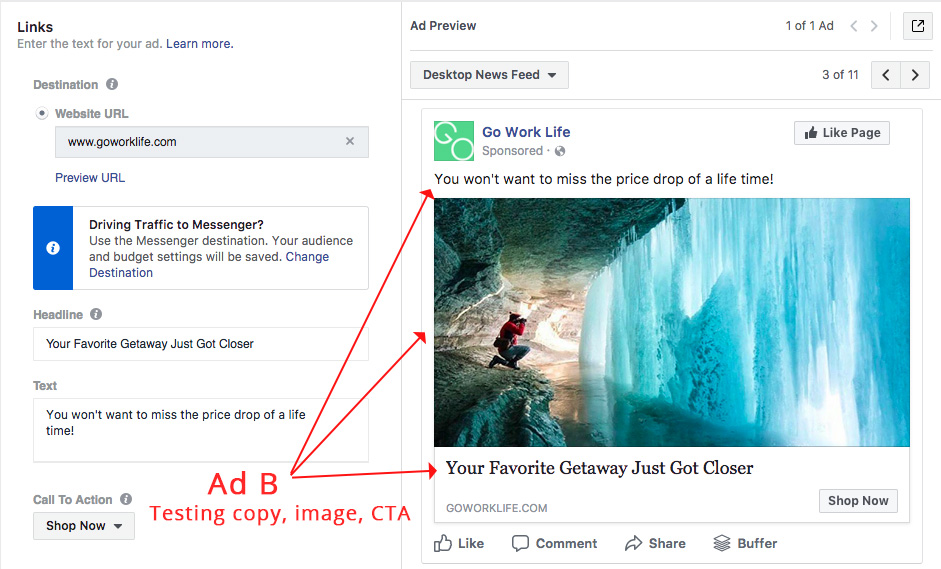
Facebook will run the ads and determine the most popular ad creative.
Draft your email based on the top performing copy, images, and CTA and send that to your email list. For this example, let’s say that Ad B won. Here’s what your email might look like:
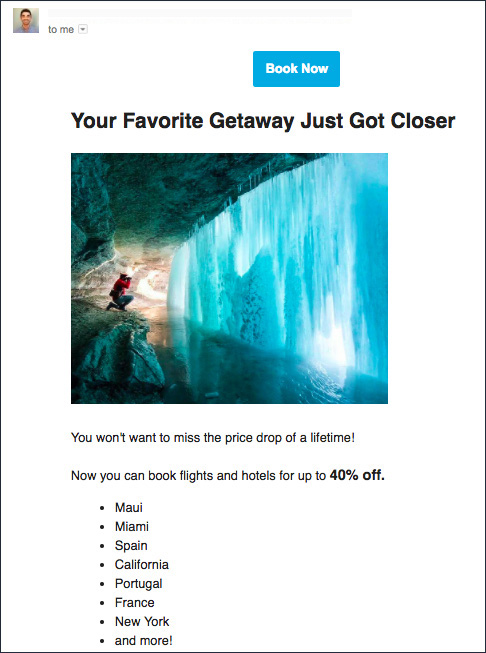
It’s a foolproof method of ensuring that you don’t waste a good email! Plus, you have the benefit of a Facebook advertisement out there that is converting (a win-win).
Whichever way you go, market the heck out of your new product landing page and watch the sales pour in.
[Hack #2] The “Product Review Generation” Growth Hack
What if I told you that nearly 95% of shoppers read online reviews before making a purchase? Or that displaying Reviews Can Increase Conversion by 270%? Or that you don’t need five-star reviews to be successful? Four-star reviews work, too! [*]
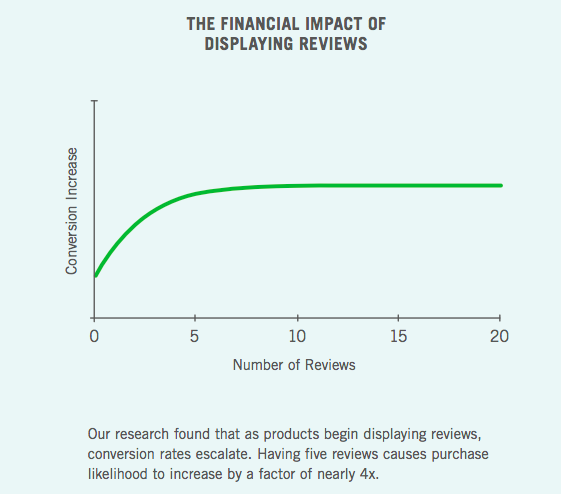
In the age of information, reviews are critical to your bottom line. Without reviews, your products simply won’t sell.
That’s why this “product review generation” hack is perfect for businesses of all shapes and sizes. Here’s what to do.
Step 1: Ask your manufacturer for permission to post their reviews on your website
If you are selling a product from a manufacturer, chances are they already have great product reviews out there about the specific product you’re selling.
In addition to asking your customers for new reviews (which I always recommend businesses do with every sale), you can ask the manufacturer directly for permission to post their reviews on your website.
Step 2: Post in the reviews section on your product page
The manufacturer will most likely want to ensure that you’re properly attributing the review on your website. Plus, it’s just good business practice to be upfront with the buyer.
When you publish the manufacturer’s review on your website, be sure to include something along the lines of "originally posted on [manufacturer's site]".
The 40 billion dollar company, Target, is the master of this using Bazaarvoice:[*]
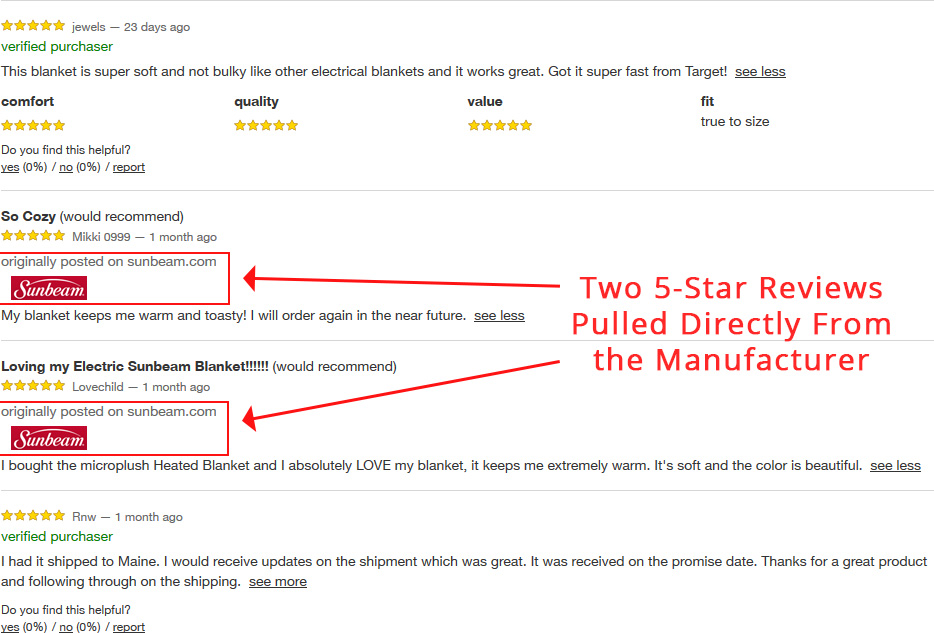
Target is using reviews (for the Sunbeam electric blanket that they sell) that were posted originally on the manufacturer's website.[*]
But the real genius is twofold.
One, many of these products either:
1) Didn’t have many reviews to start with, or
2) Had poor-to-average reviews. Pulling four and five-star reviews directly from the manufacturer instantly gave the products a big boost in ratings.
Two, customers can only see that the reviews are originally from the manufacturer if they click “See More”. In other words, you have to click “see more” reviews a couple of times before the manufacturer reviews start showing.

If you want to sell more products this year, be sure to give this hack a try.
Dillard’s also implements this technique quite effectively using a tool called PowerReviews:[*]
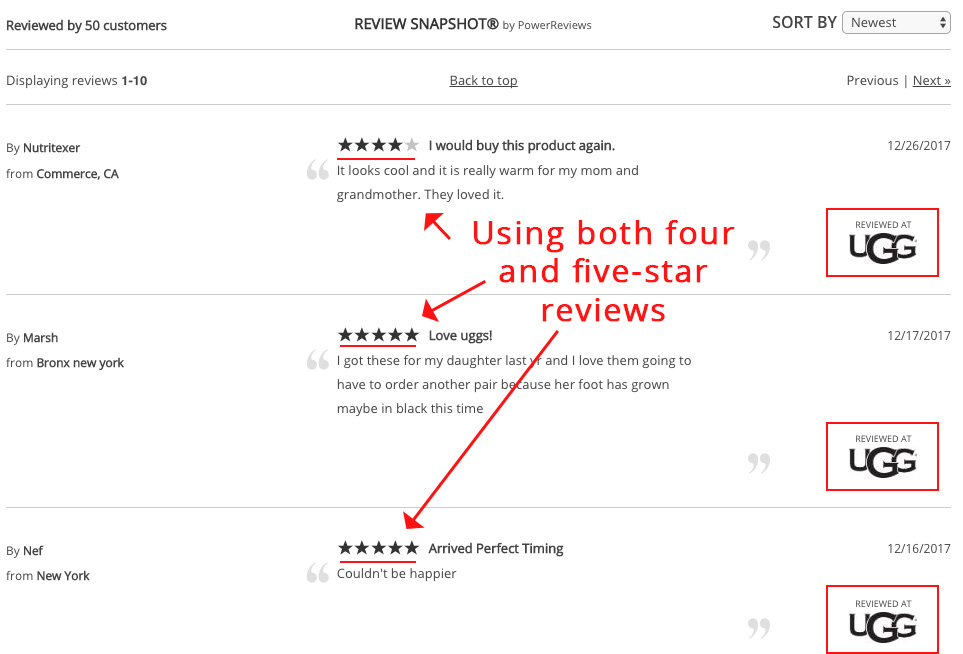
Notice the prominent display of “Reviewed at UGG” (social proof) along with both four and five-star reviews. Remember, as the research shows at the beginning of this hack, four-star reviews can be just as impactful as five-star reviews (if not more!)
[Hack #3] The Live Chat Email Capture Growth Hack
Capturing email addresses as an ecommerce business is a surefire way to increase revenue.
Don’t believe me?
Just ask Shopify, a company that uses a simple seven-day email onboarding sequence to convert free users into paying customers in just five days.
This “live chat email capture” hack will help you convert more visitors into email subscribers so that you can succeed like Shopify.
Step 1: Get a live chat tool that allows for automatic replies
If you’ve been wondering whether you should implement chat tools on your website, wonder no more.
Now is the perfect time to experiment with one of the most effective ways of reaching new customers. One ecommerce brand in the health and fitness industry was able to capture 50% more leads by utilizing a live chat tool.
Of course, our go-to is the Sumo Live Chat tool:
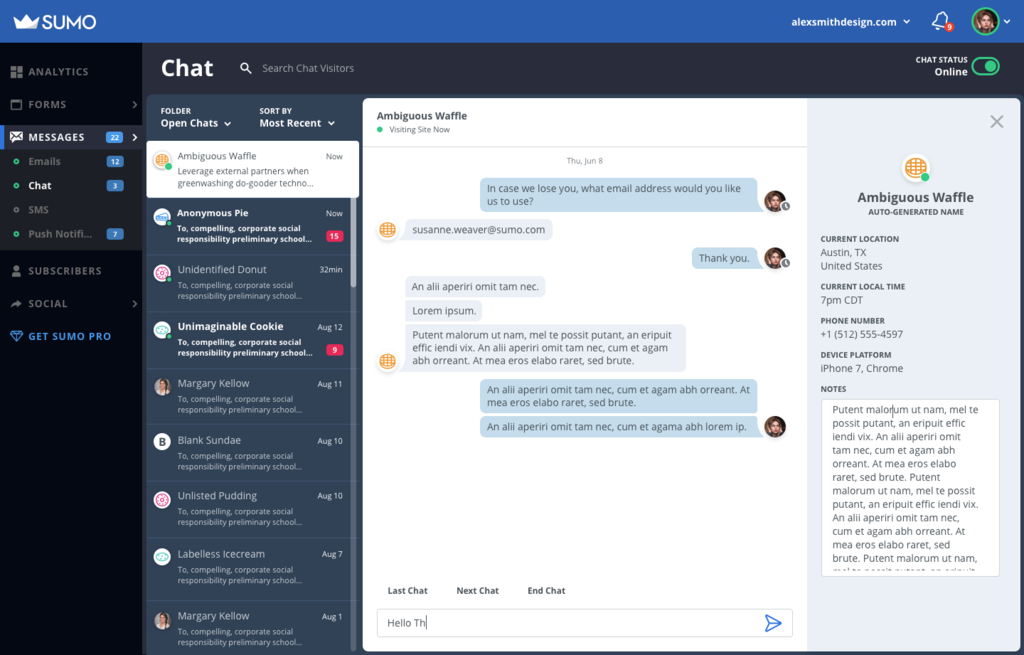
But there are lots of other tools on the market that can help you to accomplish the same task. Tools like Olark, LiveChat, and SnapEngage can all help you to convert visitors into email subscribers.
But the real magic happens in step 2.
Step 2: The magical 19 word live chat automatic reply
Remember that health and fitness ecommerce brand that I mentioned?
Here’s the 19-word reply that helped them to capture 50% more leads:
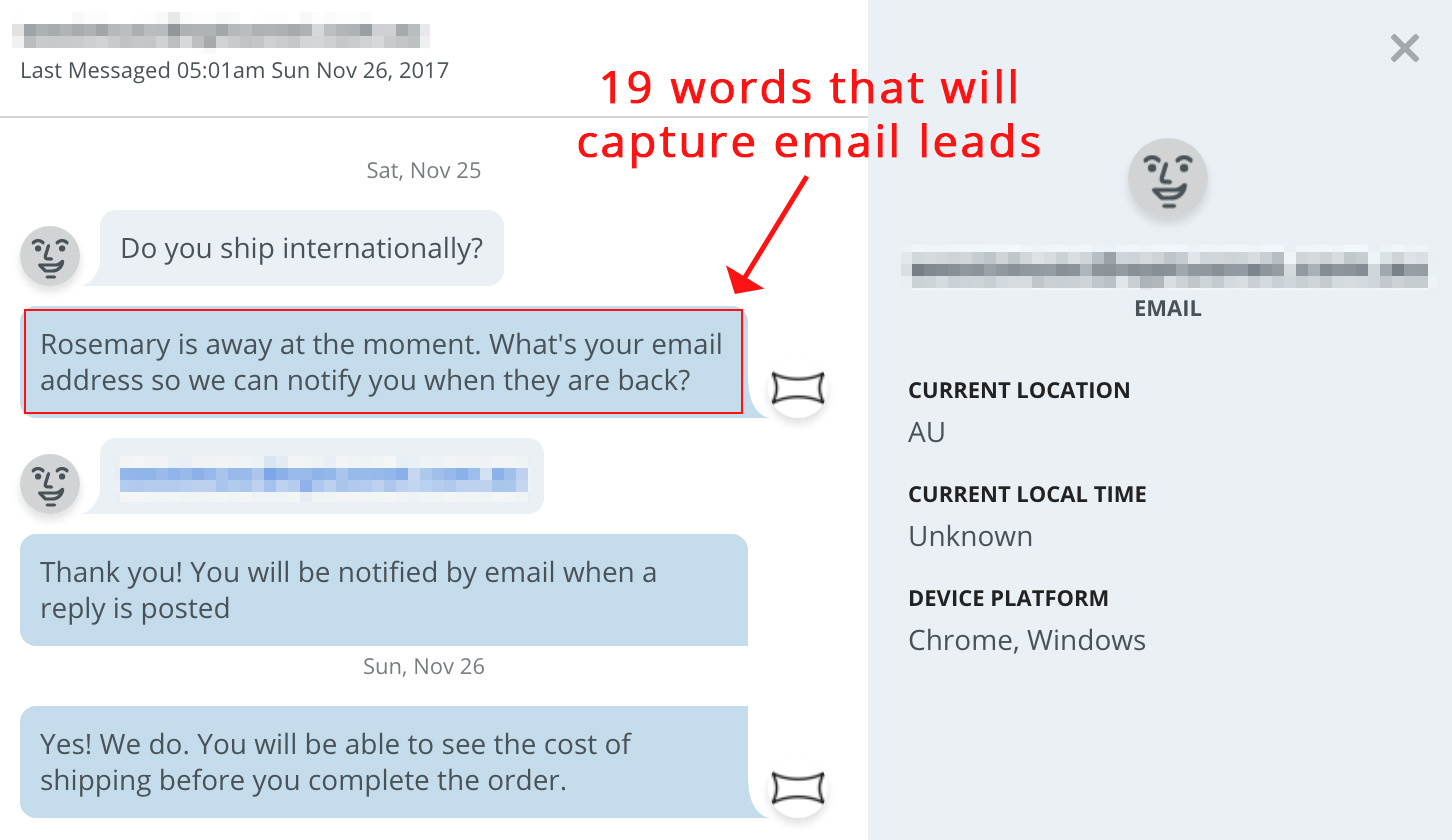
Genius.
They used the Sumo Live Chat tool to automatically send an email-capturing “away” message to any visitors that asked a question or started a conversation, meaning the tool captures leads while you catch some z’s!
Even if the customer doesn’t have a product question and just wants a discount, your chat tool can handle that, too, allowing you to reopen any conversation and provide the relevant information:
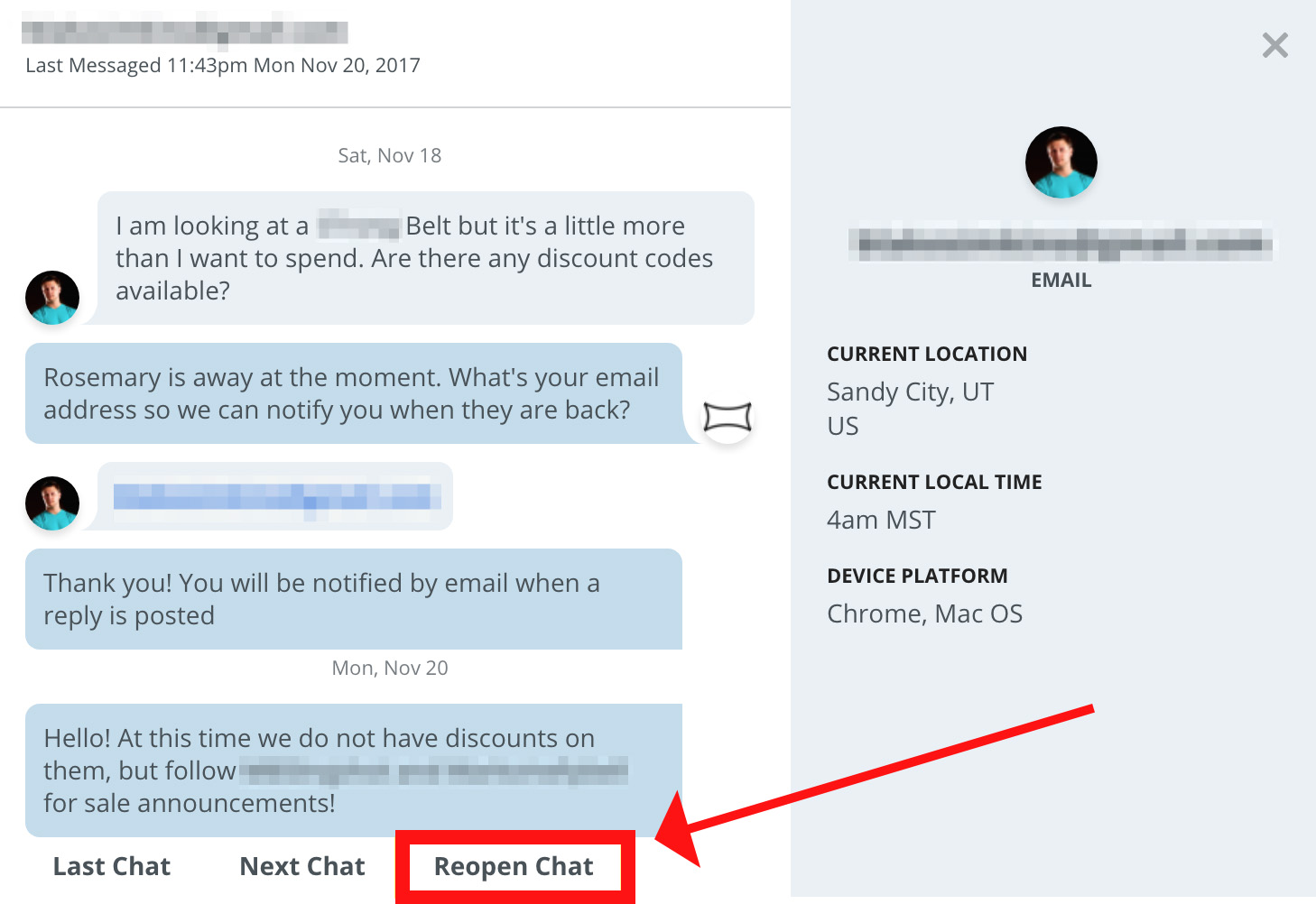
A good live chat tool will be a lead generation machine for you 24/7 (even at 4 am).
Still not convinced that live chat tools are right for you?
Smart Insights found that visitors who use live chat convert at roughly 8x the rate of non-chatting visitors.[*]
[Hack #4] The Product Scarcity Growth Hack
Have you ever been casually shopping online for a product and all of a sudden you feel like you need to buy it because you see something along the lines of this:
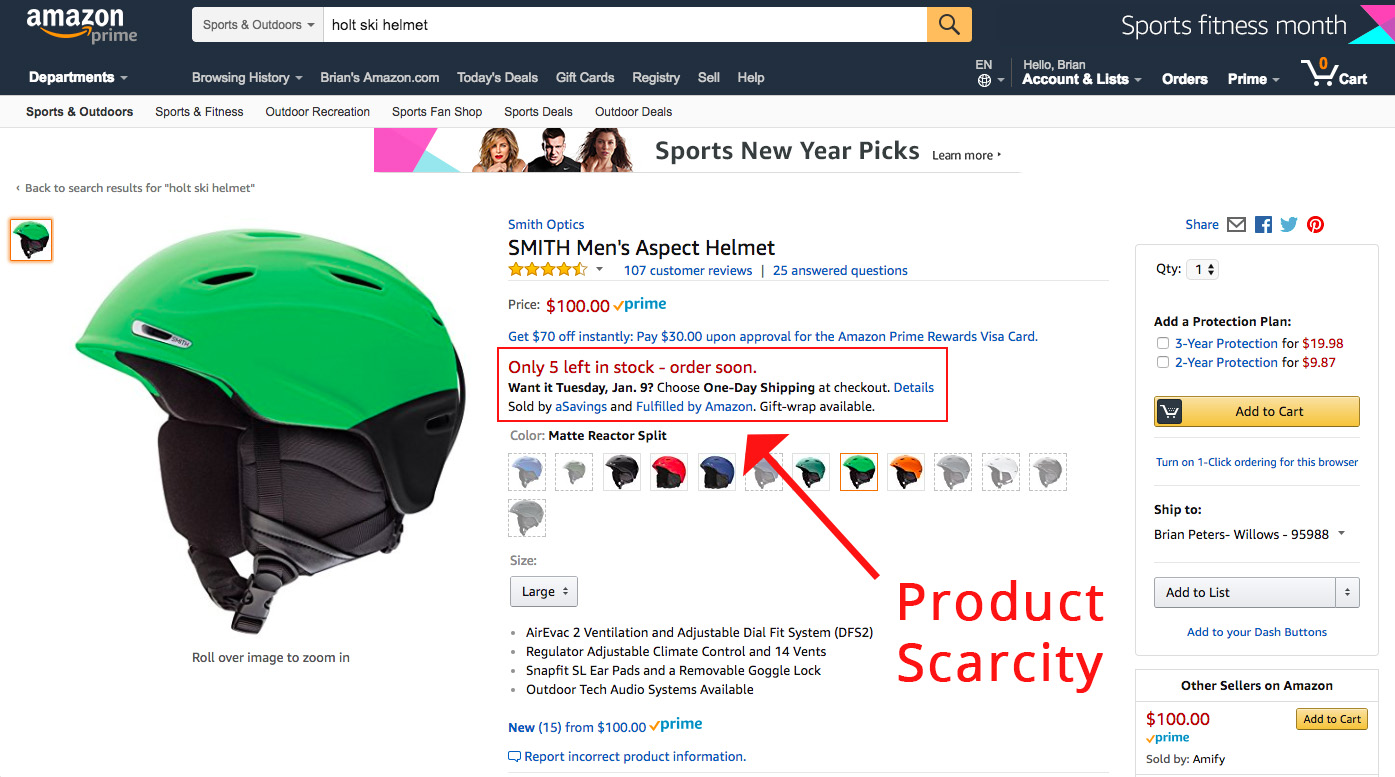
“Only 5 left in stock – order soon.”
What if they run out? I have to buy it now!
That’s the “product scarcity” hack at its finest, and it has helped some companies boost sales by up to 226%.
Researchers at the University of Maryland put it perfectly in a study on the effects of scarcity.[*]
They explained that, when something is rare, it’s alluring whether you’re talking about gemstones or a pristine edition of the first issue of Action Comics. Psychologists have long known that you can make a consumer good more desirable by making it appear rare.
In other words, by simply making your products appear rare, you make them more desirable.
Here are two types of scarcity tactics you can use to boost sales and increase revenue.
Type 1: Quantity
Quantity-related scarcity hacks are the ones we see the most.
Why?
They’re super easy to implement into your ecommerce marketing plan, and they just flat out work.
REI, an outdoor gear retailer, does a great job of using product scarcity to sell more:

Scarcity #1 – “HURRY! Clearance quantities limited. Shop now for best selection.”
Scarcity #2 – “Low inventory! Order soon.”
They hit you twice here. One, they’re saying that these clearance items aren’t going to last long, so you better get on it while you can. And two, these boots are also low in inventory. A double whammy!
Pro Tip: Don’t use the product scarcity hack on every one of your products. Be selective and use this hack on products you 1) need to move off the shelves, 2) are truly low in inventory, 3) are on sale, or 4) have experienced a dip in sales recently.
Type 2: Time
Time-related product scarcity hacks aren’t as common as quantity-related, but they’re nonetheless effective.
Even if you’re not selling a physical product, you can still use time scarcity to drive sales to things like an event or webinar.
Social Media Examiner has been using the product scarcity hack for years to sell tickets to their annual Social Media Marketing World event.
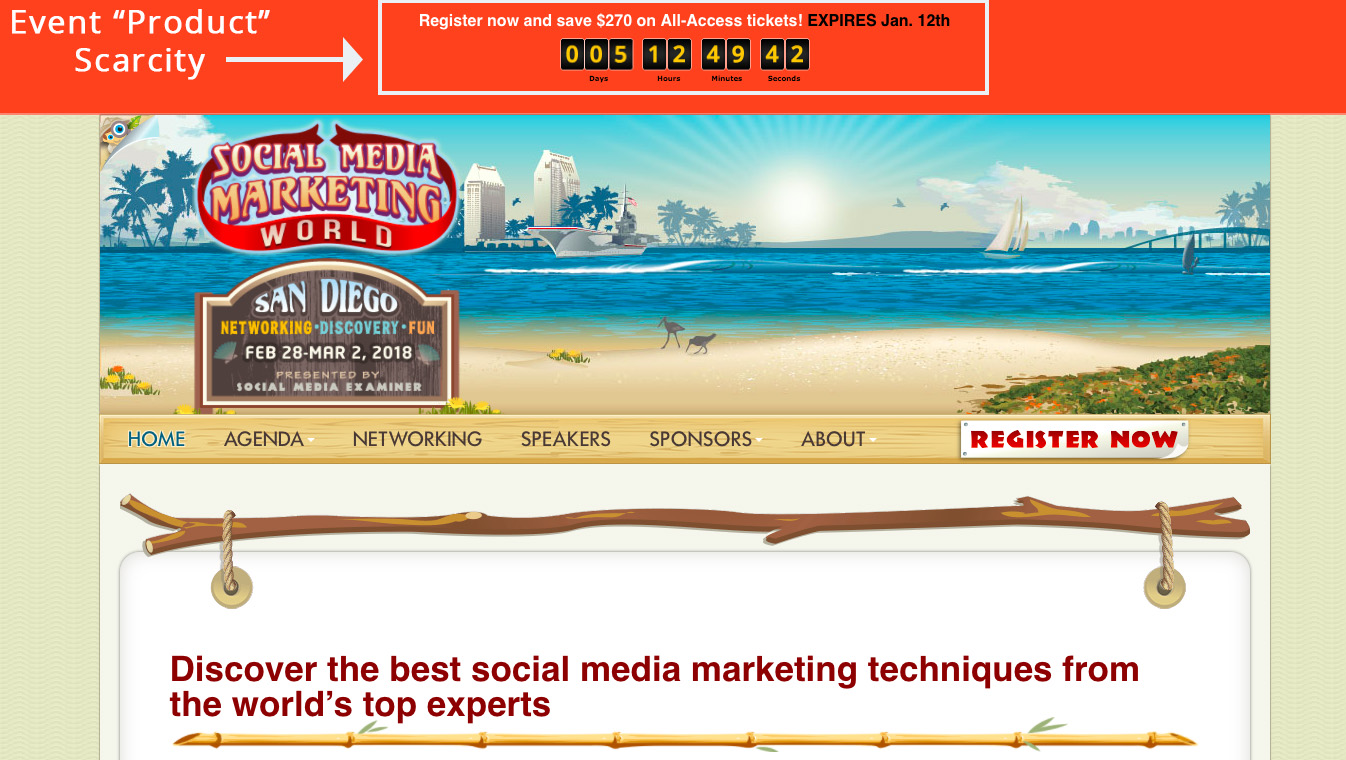
Event Scarcity: “Register now and save $270 on All-Access tickets! EXPIRES Jan. 12th”
The limited time sale on All-Access tickets taps into what Dr. Dan Herman labeled as The FOMO phenomenon in 1996. FOMO is short for “Fear of Missing Out” and is defined as a “clearly fearful attitude towards the possibility of failing to exhaust available opportunities and missing the expected joy associated with succeeding in doing so.”
You. Me. We all hate missing out on something. In this case, a great deal.
Fear is a powerful motivator, and ecommerce businesses can use fear (in a moral way) to drive more sales to their products, events, webinars, and more.
The best part?
You can start experimenting with scarcity with your own business today by using a countdown timer on your Sumo pop-up.
[Hack #5] The Cart Casino Email Capture Growth Hack
You don’t think I’d let you go with just one email capture hack, do you?
Email is such a major component of effective ecommerce marketing and growth that an article just wouldn’t be complete without at least two email strategies.
That’s where the highly effective “cart casino email capture” hack comes into play.
In our early tests, we’ve been able to use Cart Casino to generate over $100,000 in one day!
Here’s how it works:
- Your visitors land on your website
- Using Cart Casino, your visitors enter their email address and “spin” to win prizes you determine in advance
- You can offer prizes like a certain percentage off, free shipping on purchases or free product. Or, you might add an option for people to win nothing at all (and that’s alright).

For example, let’s say a visitor lands on your website and sees your shiny new Cart Casino tool. They spin and receive 25% off of their entire order. Awesome!
That customer now has even more incentive to shop on your website and go through with the purchase. At the very least, you now have their email address and can even cookie them for your social media retargeting campaigns.
Another example. Let’s say a visitor lands on your website and enters their email to spin the wheel. They win nothing and leave your website without purchasing a product.
You can still turn it into a “win” for your business.
Place all email leads you receive via the Cart Casino in their own segmented email list (bonus for separating them into winners vs. non-winners). Then, nurture the heck out of them with highly specific copy and deals.
Here’s what that could look like:
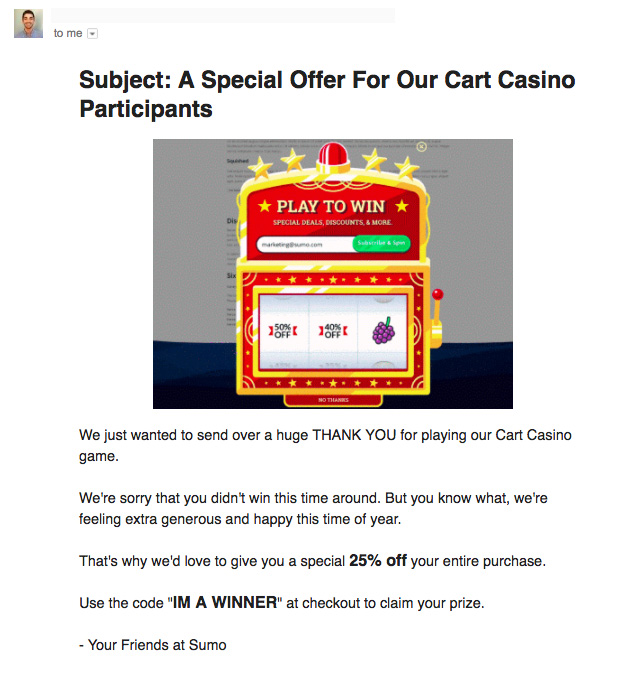
No matter what your customers walk away with, you’ll have something valuable to offer them.
Cart Casino is part of our ecommerce and Team plans.
Finding Your Own Fast Track To Success
Despite what marketers and businesses might say, there’s no fast track to ecommerce success. However, there are proven, time-tested ecommerce growth hacks that sure can make it feel like your business is on the fast track.
From the “best seller” and “live chat” to “product reviews”, “product scarcity”, and “Cart Casino”, these hacks will help your business gain the traction you need to sell more products and increase revenue.
Below I’ve also thrown in a bonus “Cart Abandonment Reduction Growth Hack.” This one is Sumo customer’s highest sales generating hack:
Add A Comment
VIEW THE COMMENTS